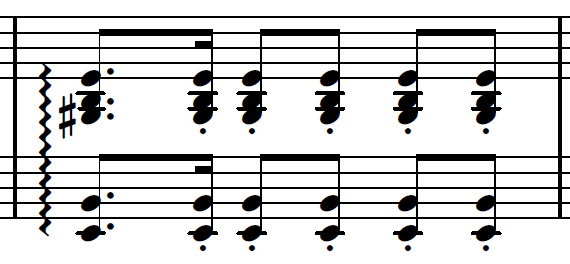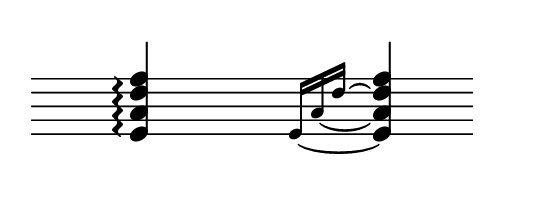Welcome. It looks like you’ve done some research on this beforehand, which is good. The relevant sections of the PDF you provided are here in two images:
Arpeggio
What it looks like in this piece:

Start by pressing the very bottom note and play each note above it, one at a time, without releasing any of the notes until you reach the highest note. Since this music is vivace, it will be done very quickly. It takes coordination, surely, but it’s an indispensable technique for pianists and well worth taking the time to practice.
(Interestingly, for guitarists, it’s a technique that comes about quite naturally as a function of the instrument itself: the regular strumming of the guitar is essentially an arpeggio. That gives you at least a clue into the interpretation and intended sound for this piano piece.)
It might help to see what it looks like more verbosely:

Now, a bit of explanation. Something that makes good logical sense for playing a chord with no ornamentation would follow thus:
“If the piece directs me to play at 60 beats per minute, and the quarter note is counted as 1 beat, and this chord is made up of four quarter notes, then I will play all the notes at once for exactly 1 second—no more, no less.”
Easy enough, right? Now, what happens when you have to play the notes not all at once but one at a time? We are faced with a dilemma:
“If the piece directs me to play at 60 beats per minute, and the quarter note is counted as 1 beat, and this chord is made up of four quarter notes, and I must play the chord arpeggiated, then I will have to decide how much time to dedicate to the playing of the arpeggiation and how much time to dedicate to the full sounding of the chord.”
That might sound confusing at first, but let’s break it down. My understanding of this technique is the following: the last note of the arpeggio should generally be the note that sounds on the beat. For instance, if an arpeggiated chord occurs on beat 1, you will want to start the first note of the arpeggio slightly before beat 1. Sometimes, however, you might perform the arpeggio in with a slightly different timing, depending on the context or your desired sound or effect. Here’s an example:

On the left is the image of the chord that is arpeggiated. The four examples to the right of it demonstrate in a somewhat literal or verbose fashion how you can perform it. The red line is the measure line. The green box represents the most usual choice; the purple represents another choice that I believe probably to be less common but still useful; and the orange represent inadvisable choices. Sometimes, these depend on context.
What should become clear here is that the time (rhythm) you spend on the arpeggiation of necessity takes time (rhythm) away from somewhere. In the green box, it takes time away from whatever music came before the chord; in the purple box, it takes time away from the chord itself (basically, subtract however much time you took on arpeggiating the chord from the rhythm of the chord—in other words, if it takes you the length of time of a sixteenth note to arpeggiate a quarter-note chord, and you start the arpeggiation on the beat, then the chord effectively is only as long as a dotted-eighth). The orange is kind of just a mess somewhere in the middle.
After even just a bit of practice on this technique, you will certainly not be analyzing to this depth. It is good to keep in mind, though. For this piece, I would recommend the use of the “green” box.
Tremolo
What it looks like in this piece:

The tremolo can have a few interpretations depending on which instruments you’re performing—for instance, on strings it can be interpreted in certain contexts as something like “not specifically counted; very, very fast; as rapidly as possible”—but for our purposes, on piano, it is usually counted evenly, although this example provides something of a bit of detective work.
First, the easy stuff:
A tremolo between two notes is performed by alternating them. Here’s a graphic I so expertly drew to illustrate this technique:

Very professional. Now, with even just that information, you should have no trouble performing the tremolo. It is made up of the notes written and with the rhythmic pattern of 32nd notes. The “detective work” part of this is the added fermata. If there were a fermata here with no tremolo, the meaning of the fermata is simply to hold the chord for longer than written (how much longer is up to you, though a “reasonable” length is preferable). My guess for a piece like this is that the tremolo is something like a “flourish” at the end of the piece, and so you would not simply perform the tremolo for only the length of a half note, but for… well, as long as your arms can last, maybe?
Epilogue
Let me know if any of this could be clearer or if those audio links are still working.





